Learning Center
writing
Punctuate dialogue with comic strips, candy hearts, & more
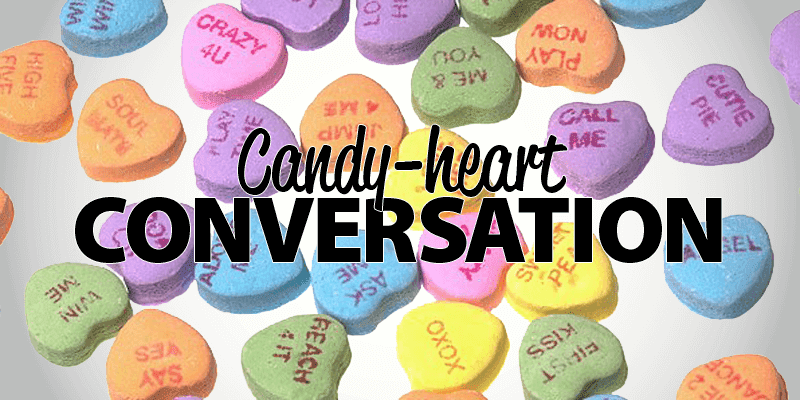
Quotation marks alert the reader to what is being spoken by a character—versus everything else that is described by the narrator. This is an unspoken agreement between the writer and his readers. But, when students don’t punctuate dialogue correctly, the audience struggles to comprehend. Knowing how to punctuate dialogue clarifies what the writer wants to convey to his reader.
The 2 most basic conventions of dialogue are:
- Only the words that come out of a character’s mouth go INSIDE quotation marks.
- Punctuation marks that go with that speech also go INSIDE the quotation marks.
To illustrate this for students, project a memorable line of dialogue from a recently read text. Point to the beginning and ending quotation marks and tell students that each represents a pair of lips. The left one indicates the character’s mouth opens, and the right set shows he is done speaking with the closing of his mouth.
All adjacent words that indicate who said it and/or how it was said are OUTSIDE of the “lips.” These descriptions are provided by the narrator. They are known as speaker tags or attribution. Since these phrases were not actually uttered from the lips of the character, they are not to be included within the quotation marks.
- Provide each student with a comic strip that includes at least two characters talking via speech bubbles (comics dialogue). Since speech bubbles represent what a character said out loud, have students translate the comic strip into a conversation on paper using quotation marks, paragraph indents, end marks, etc.
- Execute the same task using a school-appropriate text message “conversation.”
- Give each student a box of candy hearts or provide them the handout of candy heart messages. Students develop a hypothetical conversation between two characters and then translate it into a written dialogue.
Eventually, assign students to return to a previously written narrative to insert dialogue that advances the plot and is punctuated correctly.
Students dabbling with dialogue during a narrative writing unit is typical. However, their initial attempts often include continuous, confusing, and clunky conversations between characters. Therefore, outline 4 principles to maximize the impact of this powerful narrative writing technique.
Primary Writing Tip: Students dabble with dialogue (and how to punctuate dialogue) when they include speech bubbles for their characters in pictorial writing. Compare these first attempts to Kevin Henkes’ illustrations in Lilly’s Purple Plastic Purse. Then encourage students to weave dialogue into their own pictorial writing using the speech bubble template.


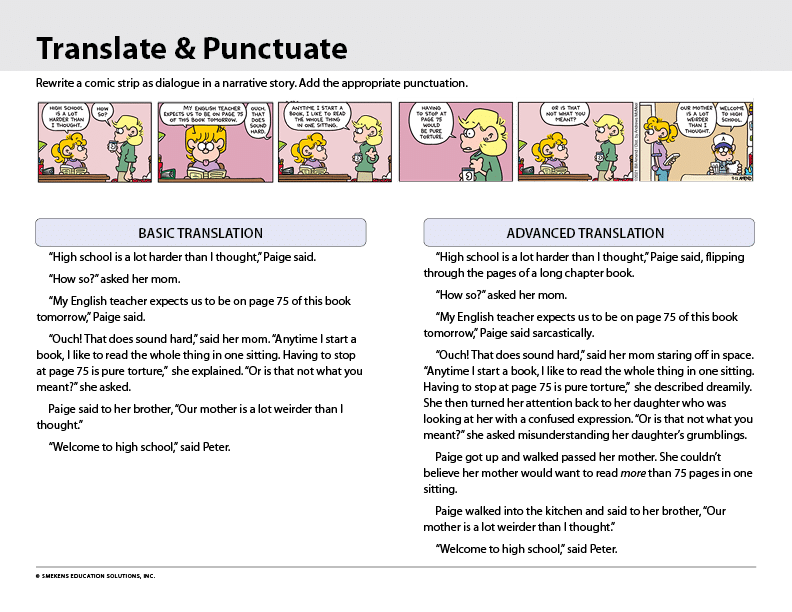
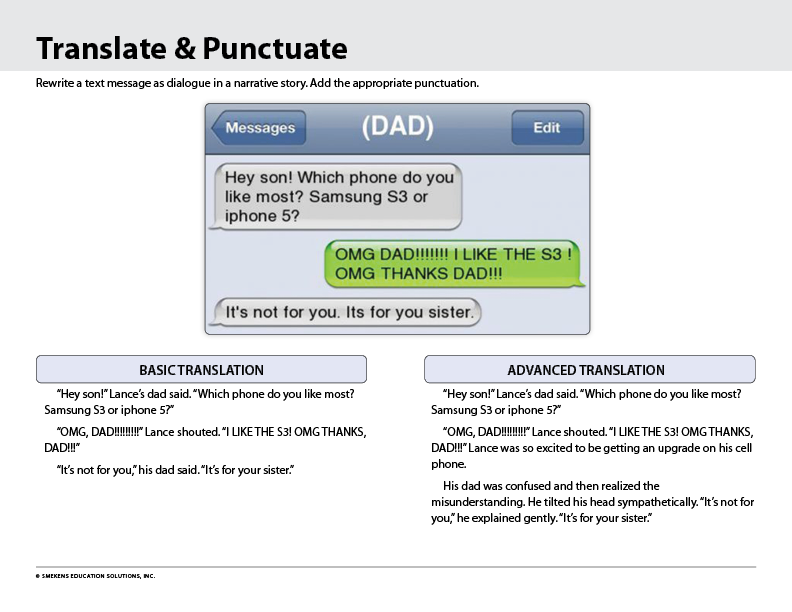
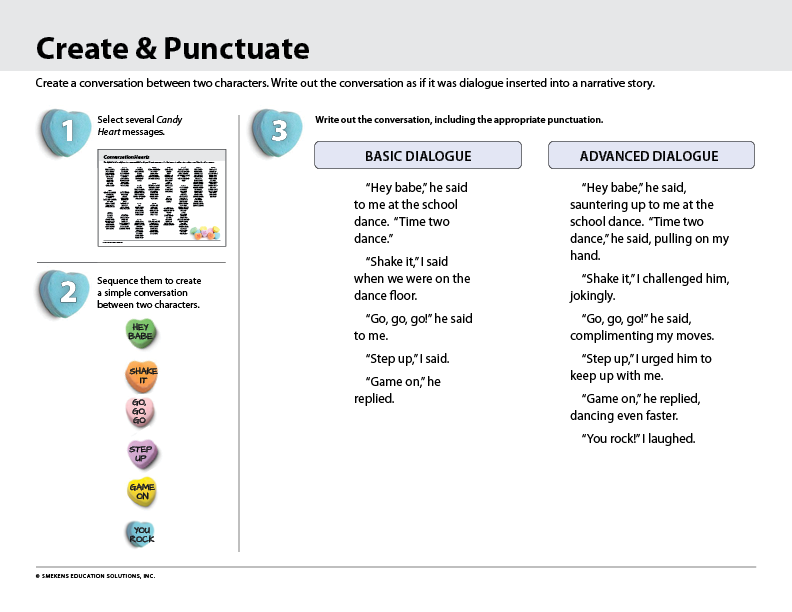

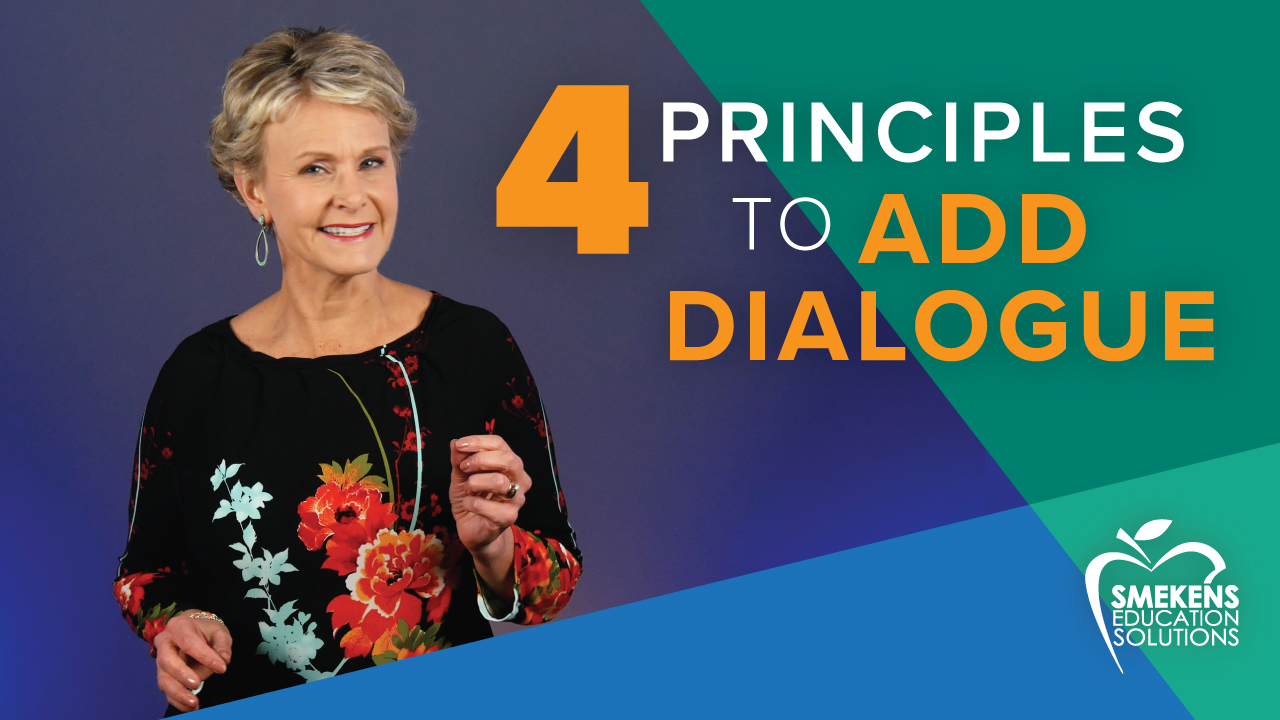


My students just finished personal narrative writing. I can’t wait to do the candy heart conversation lesson as a follow-up! Thank you!